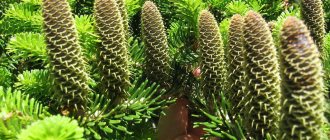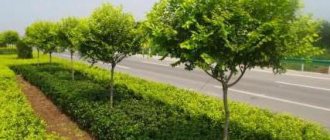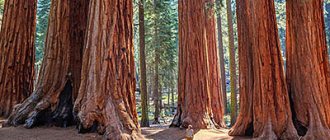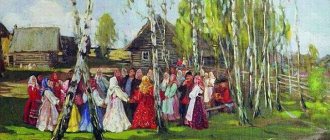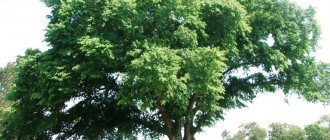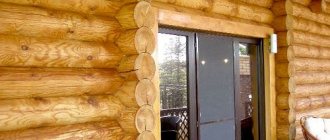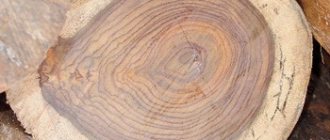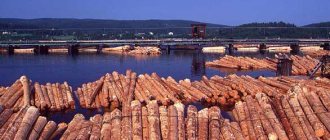Fir is a genus of gymnosperms from the Pine family, numbering about 50 species, growing mainly in the subtropical and temperate zones of the Northern Hemisphere. A characteristic feature of this evergreen tree, unlike other conifers, is cones growing upward and flat needles. Siberian fir is most often used for pharmaceutical purposes in traditional and folk medicine.
Trees of this species reach a height of up to 30 meters, the trunk is fissured at the bottom and cylindrical at the top. The crown of the plant is narrowly conical, the branches are thin, the lower ones droop almost to the ground, the bark is dark gray in color, smooth with numerous thickenings (nodules), which are filled with transparent, fragrant resin - “fir balsam”. The needles (leaves) are up to 3 cm long, fragrant, not prickly, dark green in color, on the reverse side of each there are two whitish stripes with a waxy coating. The fir blooms in May, the seeds ripen in August-September. In September-October, the cones, reaching a length of 7-9 cm, fall off, and cone rods remain on the branches (another distinctive feature of the plant).
General characteristics
Most natural fir species are large trees
Most representatives of the genus Fir (Abies) share the following morphological and ecological characteristics:
- large trees with a crown in the form of a regular cone
- in many species the bark is smooth and light gray in color
- The root system is of a core structure, going deep into the interior. The largest mass of fibrous roots is located in the upper layers of the soil
At first glance, fir resembles spruce in appearance. They are especially similar to each other from afar. Coniferous trees are similar not only in appearance, but also in name. In Old Church Slavonic, spruce is called “Yalina”, and fir is called “Yalitsa”. But there are still significant differences between them:
- most fir species have smooth gray trunks with thin bark and numerous resinous nodules
- the branches form a crown of a regular conical shape, narrower and neater than that of spruce
- the needles at the ends are blunt with white longitudinal stripes
Fir is easy to distinguish when it bears fruit . Spruce cones hang down, and fir “cobs” stick straight up. When the seeds ripen, they immediately fall out. It is impossible to pick up a cone filled with grains from the ground. If they are needed for sowing, they are looked for below or cut off along with the cones before they fall.
Fir cones are directed upward, unlike other coniferous trees, whose fruits hang down
Most types of fir need fertile, well-aerated, moist soils.
Decorative varieties are extremely sensitive to an excess of harmful substances in the air, especially carbon dioxide and car exhaust smoke. This is the reason why, in urban environments, they are much less common than other conifers.
In landscape gardening, 9 species are most often used , as well as their breeding varieties, which are similar in living conditions.
What kind of plant is this
Fir is an evergreen coniferous tree with soft, dense needles. Fir leaves are not as hard as those of pine or even spruce. They are flat and very soft.
Externally, fir is similar to spruce, only much taller - some trees grow above forty meters. The trunk diameter is 40-60 centimeters.
Like spruce, fir branches start from the ground itself. The tree has a pyramidal shape.
The root system of fir is quite developed and consists of one main root, which goes deep into the ground for several meters, and several additional roots near the surface of the earth. This arrangement of the root system makes the tree incredibly resistant to weather conditions.
The bark of the tree is thin and smooth, has small thickenings in which fir resin or resin is produced. Moreover, fir is the only coniferous tree that does not have resin and resin passages inside its trunk. Resin is produced exclusively in the bark.
Fir cones, like the leaves, are slightly different from the cones of other coniferous trees. Firstly, their location on top of the branches is slightly different from the location of pine or spruce cones. And also the cones that ripen do not just fall off, but partially. The stem of the pine cone remains on the branch while the seeds fall to the ground.
Fir seeds have wings so that they can be carried far by the wind. Fir also has the ability to reproduce using shoots in a vegetative manner.
This is a very dry tree, so it is better not to light a fire near fir trees.
Location
In the first five years of life, fir requires a lot of light
- Firs are shade-tolerant plants , but grow better with sufficient lighting. They need a lot of light in the first five years after planting. Optimal conditions are sun in the morning and light partial shade in the afternoon.
- They are wind-resistant plants , although it is better to protect them from strong turbulence. It will withstand a draft, but will suffer and lose its decorative effect.
- Requires high humidity.
- Plants are demanding on soil conditions.
Indications for use
Fir-based preparations are used to treat the following diseases: cough, diphtheria, runny nose, acute respiratory viral diseases (ARVI), influenza, colds, sinusitis, tracheitis, bronchitis, pharyngitis, tonsillitis, pneumonia (including lobar pneumonia), tuberculosis, trigeminal inflammation nerve, diathesis (in children), acne, furunculosis, eczema, herpes, psoriasis, lichen, skin fungus, wounds, gingivitis, stomatitis, periodontal disease, colitis, toothache, rheumatism, arthrosis, osteochondrosis, radiculitis, angina pectoris, neuroses, depression, prostatitis, scurvy, hypovitaminosis, poisoning, cancer.
Soils
Fir will grow well in fertile and rich soil
The lifespan of most cultivated species and varieties is several decades. They require fertile, rich soil with good drainage to thrive. They do not tolerate stagnant moisture at all. Even with short-term flooding, plants quickly die.
Fir for the treatment of respiratory diseases
Fir essential oil is indicated for various diseases of the upper respiratory tract, such as:
- rhinitis, sinusitis;
- tonsillitis;
- bronchitis;
- pneumonia;
- cough of various etiologies;
- ARVI.
Inhalations help reduce inflammation and swelling of the upper respiratory tract, which significantly alleviates the patient’s condition after the first use.
They also alleviate the condition of pronounced dryness of the laryngeal mucosa, which occurs as a result of chronic diseases of the nasopharynx.
Timing and features of planting
The optimal time in spring is April. Another deadline is the end of August, beginning of September. Although, trees with a lump of earth can be planted at any time of the year when the earth is dug.
Seedlings take root better when they are 5 to 10 years old.
Fir seedlings
The size of the planting hole should be twice the size of the coma, but not less than 60 cm in diameter and 60 cm in depth. When planting, the plant is positioned so that the root collar is flush with the edge of the hole.
The soil mixture for planting fir consists of the following components:
- medium loam – 2 hours
- leaf soil or humus - 3 hours
- bottom peat – 1 hour
- coarse river sand – 1 hour
When planting, complete mineral fertilizer nitroammofoska is applied at the rate of 250 - 300 g in each hole, as well as 10 kg of forest soil or sawdust.
If fir is planted on heavy natural soils, drainage at the bottom of the hole is required. It is formed from crushed stone or crushed brick, in a layer of 15–20 cm, and only after that the pit is filled with nutritious soil.
Collection and preparation
For medicinal purposes, buds, cones, needles, young branches (spruce branches), bark, and resin are harvested:
- buds - early spring - late March-early April;
- cones - in early spring;
- branches - in late spring-early summer,
- bark - at any time, but best in early spring, at this time the content of medicinal substances in it is maximum;
- pine needles - twice a year: at the end of spring and at the end of autumn-beginning of winter, when the maximum amount of useful substances accumulates in it;
- resin - throughout the warm season, at temperatures above 16°C.
For fir treatment, all parts of the plant, with the exception of the bark, are best used fresh. The amount of nutrients in the bark increases when dried.
The raw materials are dried in the shade, spread out in a thin layer, with good air ventilation, not forgetting to periodically turn them over. Store in boxes or bags made of natural material in a dry, dark place with good air ventilation.
Care
Fertilizing is carried out 2-3 years after planting. Typically, a universal fertilizer for coniferous plants is used - 150 g per 1 m2.
Water the fir as needed, when the top layer of soil dries out, at the rate of 15-20 liters per tree. In the hot season, the crown is sprinkled once every two weeks.
Automatic watering
Fir favors loosening the soil and removing weeds. Recently, this process has successfully replaced mulching. It is better to use forest litter, bark, wood chips, cones, and sawdust of coniferous trees as a protective material.
Due to the natural shape of the crown, fir does not need to be trimmed. with the exception of dry, broken and diseased branches.
Most ornamental varieties are frost-resistant plants that do not need winter protection. But in the first years of life, it is better to cover young plants to protect them from low temperatures. For this purpose, a modern material called “Spunbond” is used.
Fir shelter for the winter
Varieties of spunbond have different names assigned by manufacturers in different countries. The following assortment is offered for sale: Agrofibre, Agrotex, Agril, Lutrasil, AgroSUF, etc.
Any of the listed types is a white non-woven fabric that allows air and moisture to pass through well, retains heat, increasing the temperature inside the shelter from 2 to 9 degrees compared to the environment.
In areas with cold climates, the material is often used to protect heat-loving fir varieties from severe frosts.
The use of fir in folk medicine
There are many different forms of preparation of medicines. The healers' knowledge is translated into recipes that are prepared and used in different ways.
Fir tincture with alcohol
In moderate quantities, tincture of fir and young buds in alcohol treats joint and respiratory diseases. You can prepare it like this:
- carefully crushed fir needles (150 g) are poured into a glass jar;
- pour 500 ml of vodka, close, shake;
- Once every 3 days, the tincture should be taken out of a dark place and shaken;
- After 2 weeks the medicine is ready.
Drink a tablespoon 3 times a day or use as a rub.
Hot water infusion
Fir water can be prepared from fresh or dried needles. It will help cure gastritis, ulcers, prostatitis, cystitis, kidney disease, gall bladder, hypertension, high cholesterol:
- finely chop the needles (1 tbsp) in any available way;
- pour a glass of hot water;
- leave for 3 hours, wrapped in a towel.
The infusion is filtered, squeezed, and drunk 3 tbsp. 3 times a day on an empty stomach.
Fir water
Add 5 drops of fir extract to 1 liter of 45° water and beat with a mixer until smooth. This drug is used for gynecological problems in the form of douches or added to the bath.
Infusion, method 2
It comes in handy when two people in the family are sick. For 5 spoons of raw materials take 0.5 liters of boiling water. Pour the needles into a thermos and leave overnight. After straining, consume 70 g before meals.
A decoction of needles and bark for colds, sore throats, toothaches
For a glass of water you will need a teaspoon of bark and needles. Pour a glass of boiling water, wrap it up, leave until it cools down. Treatment lasts 15 days. The infusion is drunk 4 times.
Vitamin extract in cold water
Cut young fir needles are rinsed over a sieve with cold and then hot water. Dry and finely chop. Pour in cold boiled water and leave for 6 hours. Proportions – 1 tbsp. needles per glass of water. Drink 200 g per day, divided into several servings. The infusion helps restore strength after illness, with anemia. Store the liquid for no more than 2 days.
Fir decoction
For those who often get colds or suffer from anemia, prepare a healing decoction:
- 2 tbsp. rinse the needles and pour a glass of boiling water over them;
- simmer over low heat for 20 minutes with the lid closed;
- in the same container the broth cools.
After filtering, the amount of liquid is divided into 3 doses and drunk before meals.
traditional medicine uses fir needles to prepare medicinal products
Tea
A healthy fir drink helps with swelling, insomnia, neuroses, and treats stomach disorders. It contains a lot of vitamins, which are transferred into the liquid from fir and fireweed grass. A teaspoon of raw material is poured with hot water (not boiling water). Infusion - no more than 10 minutes. Tea can be combined with honey, lemon, ginger.
Cocktails
Cocktails are made to stimulate the production of gastric juice and treat gastritis. One of them is sweet, the other is not:
- a glass of non-citrus juice (apple, carrot, cucumber);
- a few drops of extract.
Add 1 tbsp to a sweet cocktail. honey Drink an hour before meals or 1.5 hours after meals.
Jam
If you have any doubts about whether to cook it or not, you just need to know the benefits of fir jam. When preparing a delicacy, the raw materials release all useful microparticles. Jam becomes a complete medicine that can be given even to children in small quantities.
Fir cone jam is prepared as follows:
- Wash 0.5 kg of cones collected in late March-early April in cold water.
- Separately boil the syrup: 250 mg of water, 750 g of sugar.
- Pour syrup over the pine cones and leave overnight.
- In the morning, put on fire, let it boil, cook for 5 minutes.
- Set aside again overnight.
This procedure is repeated three times. The finished jam is packaged and stored in the refrigerator or at room temperature.
Pine needle jam
The raw materials are washed and crushed with a blender. Add half a glass of dried rose hips to 2.5 cups and pour in a liter of boiling water. Wrap up and leave for 10-12 hours. After filtering, add 1 kg of sugar and boil until the volume is reduced threefold. At the end of cooking, add the juice of 1 lemon.
Kvass
Preparing a tasty drink takes longer. It is good for neuroses and for digestion in general. How to cook:
- you need a copper vessel in which 1 liter of water is boiled until half of it remains;
- pour 2.5 tbsp into this water. needles, add warm water to 3 liters;
- 100 g of honey is stirred until dissolved;
- Wait until the liquid cools to 25-30°, add dry yeast, 10 g.
Fermentation occurs at room temperature. Then the drink is filtered and put in the refrigerator. Drink a carbonated drink only after meals so that it does not irritate the stomach.
Honey
Honey is prepared from fir at home, which is not inferior in taste and beneficial properties to honeydew product. To do this, use one of the following methods:
- Ordinary flower honey is mixed with excised needles and left for several months.
- A glass of kidneys is filled with 500 mg water and boiled for 15 minutes.
- Set aside for a day.
- They look at how much liquid there is - add so much sugar, cook over low heat for 1.5-2 hours.
This product is more like a syrup. Pine nectar is added to teas, drinks or taken 1 tsp. during a cold.
Fir oil has high medicinal properties
Oil
Young shoots and buds are poured with olive oil and simmered in a water bath for 4 hours. After cooling, squeeze out, filter, pour the same fat into a new portion of greens, and repeat the simmering procedure. Homemade oil is slightly weaker than pharmaceutical oil, but still reveals the medicinal properties of fir and is widely used in folk medicine.
Rules for procurement of raw materials
It is not always possible to use fresh raw materials for medicine, so you need to remember some of the subtleties of the preparation. To know when it is best to collect medicinal raw materials, you should use the table:
Interesting! When collecting needles, take into account that their composition changes depending on the time of year. Thus, at the end of spring and during the end of the growing season, more essential oil accumulates than at other times. And at the end of autumn and beginning of winter, the needles contain the highest percentage of bornyl acetate, the most important component of fragrances and essential oils.
The ideal time for harvesting spruce branches is June-July. The trees are actively growing new branches with soft, fragrant foliage rich in oils. You can collect it all year round; December fir foot also has useful properties, although to a lesser extent.
In winter, fir is stored at home in a dark place outside, under a canopy, or indoors. In summer, the raw materials are placed in a bag and frozen. Before preparation, the medicine is added frozen, without thawing for a long time.
Young fir cones and buds are stored in the same way if the raw materials were not used immediately.
Dried raw materials are stored in a closed container in a dark place.
Resin can be collected all year round. Drops of resin are placed in a jar and stored under a tightly closed lid for a long time.
fir essential oil has beneficial effects and is used in aromatherapy sessions
Fir in aromatherapy
The smell of pine brings calm and relaxes. And if we take into account the bactericidal, antiviral, antifungal effect, then the use of oil in aroma lamps indoors is completely justified.
The pine aroma accompanies cosmetic procedures in beauty salons and spa rooms, and is used during massage.
6 drops of oil added to a hot bath can relieve tension, headaches and muscle pain, and help you relax at the end of the working day.
Note! Tonics can bring not only benefits, but also harm. If the smell is too strong, your head starts to hurt and the aroma causes irritation.
Application in cosmetology
A fir broom is an important attribute for bathhouse lovers. Well steamed in hot water, it increases blood flow and stimulates strong sweating, which removes toxins. It has a positive effect on the spine, calms, relieves stress and improves mood. Skin pores are cleansed and opened. Bath procedures with cinquefoil stimulate the immune system, and when combined with hardening, they heal and restore strength.
Women use fir extracts to strengthen their hair, add shine and treat skin diseases. For example, by adding fir extract (2-3 drops) to a cap of shampoo, you can eliminate dandruff, degrease and normalize the functioning of the sebaceous glands. The course of treatment is 10-15 procedures, every 3 days.
To prevent dandruff and fungal pathology, do aromatic combing. Apply 2-3 drops of oil to a comb made of natural material and comb gently until it disappears. This procedure is carried out once a week.
To strengthen the root bulbs and restore dry hair, use a massage mask. You will need:
- 2 tbsp. burdock root oil;
- 3 drops of fir oil.
Mix warm fats and rub in with your fingertips for 15 minutes. Then wash off and rinse.
But here is a mask, which after application needs to be kept on for 30-40 minutes:
- freshly squeezed onion juice, 4-5 tbsp;
- honey, 1 tbsp;
- 2-3 drops of oil.
This mask activates hair growth and prevents baldness.
Healing masks are prepared for hair using linden flowers, quince seeds, burdock roots, egg yolk, marigolds, lemon, eucalyptus tincture, mixing the ingredients with oil and applying to the surface of the head. Such nourishing procedures are done once every 7-10 days, not exceeding a dose of 2-3 drops of oil.
The cosmetic industry uses fir to prepare skin and hair care products
Infusion for cleansing and treating skin
5 tbsp. pine needles are poured with 400 mg of hot water and kept for 3 days. Take 30 g before meals, for about 1.5 months, until the condition improves.
Description of species and varieties
About 10 plant species are used in ornamental gardening
Of the several dozen natural species in ornamental gardening, the following botanical fir species are most often used:
- European or white
- Balsamic
- Single color
- Korean
- Mountain or subalpine
- Caucasian or Norman
- Tall or tall
- Spanish
- Vicha
- Arnold
Some species have breeding varieties of different sizes, shapes and colors. Read more about those that are successfully used for landscaping parks, squares and personal plots.
Unique products - a gift from a majestic tree
If a fir trunk is accidentally damaged, a viscous liquid is released from the wound. Thanks to the action of oxygen, it hardens and turns into a resin, which heals the resulting damage. This substance is popularly called resin, which corresponds to its medicinal properties.
The substance consists of essential oils, carboxylic acids and resinous elements. Practice shows that the use of fir resin is especially important for the following diseases:
- furunculosis;
- mastopathy;
- varicose veins;
- osteochondrosis;
- flu.
To treat colds, the resin is dissolved in warm boiled water to a paste-like consistency. Add a little sugar, after which the candies are formed in the form of peas. After each meal, the medicine is placed behind the cheek and gradually dissolved.
The original medicine for bronchitis is fir jam, which is prepared from young cones or pine needles.
A unique product obtained from essential oil is called fir water. It has a number of valuable properties. Therefore, it is widely used to strengthen the immune system and heal wounds. The substance is prepared in different ways. Here's one of them. Pour 1 liter of water into a small container. Add 5 drops of oil and beat thoroughly with a mixer. When a homogeneous mass is formed, the product is ready. Fir water is used for gynecological diseases in women. Regular douching is carried out under the supervision of a doctor or midwife. At home they take baths with the addition of aromatic natural water.
How nice it is that we are surrounded by many plants that store valuable elements. The medicinal properties of fir are a truly reliable source for strengthening the immune system. The main thing is to prepare the drug correctly and take it correctly, taking into account the opinion of the attending physician.
European – Abies alba
Botanical synonyms of the species are P. white or P. comb. In nature, it is most often found in most of Europe.
Average life expectancy is 350 – 400 years. There are many cases of long-lived fir trees, whose age is more than 700 years.
The average height is 50 m.
Crown diameter 7 - 8 m.
The bark is smooth, light gray.
Needles, 2.5 cm long, dark green in color. The underside of the plate has two longitudinal white stripes.
The size of the cones is 15 - 16 cm.
The species is distinguished by good winter hardiness, which gains strength as the tree matures. In particularly cold winters, young plants freeze over. For this reason, they need shelter.
Severely suffers in conditions of increased air pollution, even to the point of complete death. It is not found in mass plantings; it is easier to find the species in a botanical garden or in a well-groomed area where a professional works.
Balsamic – Abies balsamea
The natural habitat of the species is the North American continent in Canada and the USA.
The average duration of growth is 150-200 years.
Among the species, fir is considered a relatively short tree that grows up to 25 m.
It has a thick, cone-shaped crown.
The color of the smooth bark is pale gray. The needles, characteristic of fir, are mild and dark green on top. On the reverse side of the plate are two thin whitish stripes.
When young cones appear, their color is dark purple, but when ripe it changes to light brown.
The fruits reach such sizes - length - 70 cm, diameter - 3 cm.
Frost resistance is superior to other types of fir.
The following selection forms are used in landscape design:
1
Balsamic Nana – Abies balsamea Nana
Slow growing miniature shrub.
At the age of ten it reaches 50 cm in height and the same in width. Detailed description:
- maximum dimensions of the variety – height 80 – 100 cm, diameter – up to 2 m
- crown shape – flat-round
- flowers and fruits have no decorative value
- grows successfully in fresh humus soils, suffers in extreme heat and dryness
- characterized by high demands on soil fertility and moisture
The variety is recommended for cultivation in climatic zones – 4 – 6 (according to USDA). Used in rocky gardens, mixborders, and container plantings.
2
Balsamic “Piccollo” – Abies balsamea Piccollo
- The bush is a spherical dwarf.
- Growth is slow, at the age of ten years the crown forms on average up to 30 cm in diameter.
- The needles are short and thick. Needles located close to each other form a “brush”.
- They need fertile, loose soil, without stagnant water. Does not tolerate scorching sun and drought.
- The optimal climate is in zones 4 – 6.
Chemical composition
The medicinal raw materials of fir are needles, young branches, buds and bark.
Found in various parts of the plant:
- Roots: essential oil (about 8%), the components of which are safrole, camphor, cineole, camphorene, bisabolene, camphene, organic acids;
- Bark: tannins (up to 13%); resin (fir balsam), which includes resin (up to 70%) and essential oil (up to 30%);
- Seeds: solid fatty oils (up to 30%), containing acylglycerols of oleic, carminic and lauric acids, as well as vitamin E;
- Needles: essential oil (the basis for camphor), proteins, carbohydrates, carotene, vitamins C and E, flavonoids, phytoncides, trace elements (iron, cobalt, manganese, copper, zinc);
- Shoots and thin branches: essential oil (about 4%), consisting of 80% camphor.
The composition of the essential oil of all parts of fir includes: bornyl acetate (an ester of borneol and acetic acid), tannins, vitamin C, tocopherols, carotene, borneol, beta-pinene, alpha-pinene, camphene, dipentene, santhene, A-phellandrene, bisabolene .
Single color – Abies concolor
A medium-sized coniferous tree, up to 25 m high. At a young age, the shape of the crown is sharply cone-shaped, over time it changes to a broad pyramidal shape. It is distinguished by strictly horizontal growth of branches.
The needles are long, like for a fir, up to 8 cm, colored gray-green.
Young fruits point upward, reddish in color. As they ripen they turn pale brown.
Unlike most types of fir, the growing conditions are treated with average demands. They grow best in fresh, fertile, humus-rich soils.
P. monochromatic is considered the most unpretentious species.
Optimal zones for cultivation are 4 – 5. During the first 5 years after planting, young plants require shelter for the winter if extremely low temperatures are expected.
It tolerates urban conditions more than other firs.
Due to its large size, it is used in park construction and landscaping of large areas.
1
Single color f. “Compacta” – Abies concolor “Compacta”
- A slow-growing, low-growing variety that reaches only three meters by the age of 30.
- The needles are thick, short, dark green, shiny on top and matte on the back side of the plate. Their length is shorter than that of the original species.
- The selection form is good for single plantings, which in landscape design is called “Solitaire”. Suitable for small areas, often used as a Christmas tree.
- More than other types and varieties of fir, it can withstand gas pollution in populated areas.
- Recommended climatic regions – 4 – 5.
2
Single color – Abies concolor f. "Violacea"
- The selection of the variety, which began in 1879, was aimed at consolidating its unique decorative properties. The form differs from other representatives of the genus “Fir” due to the unusual color of the needles. In certain lighting it has a violet hue, hence the name Violacea, which literally means “violet”.
- Despite its sophistication, the variety is more resistant to air pollution than others, has relatively high drought resistance, and winters well.
- The average height of the plant is 7 – 8 m. It grows quickly compared to other species.
- When propagated by seeds, it almost always retains the decorative properties of the variety, which is extremely rare among hybrid plants.
- Gardeners try to place the tree alone or in a prominent place so that its effectiveness can be seen from everywhere.
Fir propagation
Reproduction methods
Species fir is propagated by seeds, which are harvested at the very beginning of the ripening of cones, and decorative varieties are taken from cuttings.
Propagation by cuttings
Cuttings for rooting 5-8 cm long should be taken only from young trees, and these should be annual shoots with one (not two - this is important) apical bud and always with a heel. If you want to get a cutting with a heel, then it is better not to cut it, but to tear it off with a sharp movement along with fragments of the bark and wood of a more mature shoot. Cuttings should be harvested in the spring, before sap flow begins, on a cloudy morning from the middle part of the crown on its northern side. Before planting, carefully remove burrs from the heel.
- Erigeron (small-petaled): planting and care, types and varieties
Make sure that the bark on the heel does not peel off from the wood. To avoid the further development of fungal diseases, the cuttings are kept for 6 hours in a two percent solution of Fundazol, captan or a dark pink solution of potassium permanganate. Then the cuttings are planted in a mixture of sand, humus and leaf soil in equal parts and covered with a transparent cap. In order for the cuttings to take root faster, it is advisable to arrange the bottom heating of the substrate 2-3ºC above room temperature. The cuttings should be kept in a bright, but not sunny place, with daily ventilation.
For the winter, the container with cuttings can be moved to the basement, and in the spring it can be taken out into the fresh air. It will take a long time for the cuttings to take root - the fir will first grow callus, and only in the second year will roots appear.
Growing from seeds
Collecting fir seeds is not easy, since the cones of mature trees ripen high, and as soon as they ripen, the winged seeds from them immediately scatter. But if you are lucky enough to get a slightly unripe cone, dry it, remove the seeds and store them in the refrigerator or in the basement with high humidity until sowing - fir seeds need stratification before planting. In April, the seeds are sown in a bed to a depth of 2 cm in soil made of sand and turf and covered with film without watering to avoid the formation of a crust on the surface of the soil and to speed up the emergence of seedlings.
When the sprouts sprout after 3-4 weeks, start watering, loosening and weeding the beds. In the first winter, the seedlings are covered with spruce branches. Next year you can plant the seedling in a permanent place. Fir from seeds initially grows very slowly: in four years it reaches a height of 30-40 cm, since it mainly develops the root system. But then growth accelerates noticeably.
Korean – Abies koreana
Medium-sized tree of slow growth. At the age of 30 it grows to a height of 3 - 4 m. The needles are short, shiny on the outside, and whitish on the back side of the needle.
The blue-violet cones directed upwards give the variety an impressive decorative effect. They appear even on young plants, about one meter high.
The species is characterized by high demands on lighting and soil fertility.
Successfully used in single and group plantings. Recommended for small areas as a New Year's tree.
Climatic zones – 4 – 6.
The varieties “Brefolia” and “Silberlock” are popular on sale.
1
Korean – Abies koreana f. "Brefolia"
- The appearance of the crown is radically different from the cone usual for fir, since the branches are located asymmetrically.
- The dwarf shrub grows slowly, its maximum height is about 1 m, after thirty years of life.
- The shoots are hard, short, lacy.
- Extremely demanding of lighting and soil. Needs high fertility and painstaking care.
- Most often grown in the fifth climate zone.
- In the landscape it leads in rocky gardens and mixborders.
2
Korean – Abies koreana f. "Silberlock"
- Medium-sized, slow-growing variety.
- The conical crown is round in shape and gains width after 10 years of life. Approximate height 3 – 4 m at the age of 25-30 years.
- A distinctive feature is flexible, curved shoots, uncharacteristic of fir.
- Used in mixed tree and shrub plantings or as a single specimen in an open area.
- One of the recommended options for decorating for the New Year.
- The optimal geographical growth zone is 4 – 5.
Mountain – Abies lasiocarpa
Another botanical name is P. subalpine.
The selection form “Compacta” is used in landscaping:
A medium-sized tree 2 - 3 m high.
The maximum crown width in the lower part is 2 - 2.5 m.
The shape of the tree is cone-shaped. The degree of overgrowth of branches is high.
Green needles at a young age acquire a silvery coating when fully bloomed.
The flowers and cones are inconspicuous and have no decorative value. growing conditions.
A characteristic feature is slow growth.
Requirements for growing conditions:
- Grows well with sufficient light on humus-rich soils.
- Tolerant of short-term drought, but responsive to soil and air moisture.
- Reacts negatively to soil compaction and salinity.
- Suffers in a highly acidic environment, even to the point of death.
- It grows normally in 4 – 5 – 6 climatic zones.
In landscape compositions it is used in rock gardens, container plantings, as a tapeworm.
Caucasian – Abies nordmanniana
In Europe, the species is known under the name P. Nordmann.
A tree with slightly raised branches, the crown is pyramidal. The lower tier of branches is preserved at any age.
The height of an adult plant is 25–30 m. At the age of thirty it reaches 10 m.
The color of the bark of the trunk and shoots is gray with different shades.
In mature plants, the lower part of the trunk has cracks.
The length of the needles is up to 4 cm.
The shoots are densely covered with needles with blunt ends.
The silvery tint of the pine needles gives it a special decorative effect, which is most noticeable during strong gusts of wind.
The renewal of the needle cover occurs on average once every 9 - 13 years.
The lifespan of the species is calculated in centuries. The Nordmann fir lives about 500 years.
The maximum height of the tree is over 50 meters.
Conditions necessary for successful and long-term growth:
- Penumbra.
- Rich, moist, well-drained soil. Grows best on medium-heavy fertile loams.
- Fir is wind resistant.
- Withstands low temperatures characteristic of warm climate zones six and seven.
- When grown in zone 5, they require shelter for the winter. Not recommended for colder regions.
Due to its slow growth, it is used in small gardens as a New Year's decoration object. Perhaps the most common type in Europe, as an attribute of Christmas.
The species has a number of breeding forms:
- "Erecta"
- "Pendula"
- "Aurea"
- "Aurea spicata"
- "Golden Sprelder"
- Ambolouri
- "Jadwiga"
Read more about the most popular varieties.
1
Caucasian (Nordman) – f. Abies nordmanniana "Golden Sprelder"
- Miniature bush-like form, with an interesting depression in the middle of the crown.
- The average height of the plant is approximately 1 m in height and the same in width.
- The decorative effect of the variety is determined by the density of the branches and the color of the needles. At the base of the shoots the needles are green, closer to the edges they are bright yellow. The reverse side of the records is dark green.
- To maintain bright color, the variety is planted in well-lit places; from a lack of light, the needles turn green, losing their effect.
- Uniform growth and decorative qualities are achieved on loose soils with a high nutrient content. On poor soils, an expensive shrub will not have breeding properties.
- In landscaping, it looks good in rocky compositions, so it is often used in rock gardens and rockeries.
- They decorate tree and shrub groups at any time of the year, and flower beds in winter.
- The variety is thermophilic, intended for the sixth and seventh zones. In colder climates, it requires shelter for the winter.
2
Caucasian (Nordmann) – Abies nordmanniana f. "Pendula"
Literally translated from Latin, “pendula” means “hanging.”
More often they say about such varieties: “Weeping form.” The variety requires the gardener's close attention, since it grows in individual conditions.
- The decorative effect will be fully revealed if the bush is planted in a well-lit place that is protected from wind and drafts
- "Pendula" is demanding on soil fertility
- needs systematic watering and weeding
- adverse weather conditions and the slightest error in care react negatively
- grown in warm climates, starting from the sixth zone and further south
If garden difficulties do not frighten the owner, weeping fir will become one of the exotic plants on your site.
Treatment of joint pain
Fir oil is rich in beneficial and healing properties. This is a very good helper for alleviating joint and muscle diseases.
The oil contains active ingredients such as:
- Camphor - has a pronounced analgesic effect, as well as a natural antiseptic.
- Bornyl acetate is an ester that gives the oil a specific pine smell. It has an anti-inflammatory and anti-edematous effect, soothing.
Fir oil is also rich in vitamins and antioxidants, which the body absorbs when applied externally directly through the pores of the skin. This helps to improve the condition of a damaged or diseased joint and restore it.
Thanks to proper use, the beneficial properties of fir and recipes will allow you to get back on your feet even with severe pain. Here are some recipes:
- Fir baths for arthrosis. Add a little decoction of fir needles to a bowl of warm water or make a solution of water and fir oil in a ratio of 10 drops of oil per liter of water and warm your feet or hands in the solution for about 15 minutes.
- You can first warm up the joints with a blue lamp, bags of salt, a heating pad, and then rub fir oil into the affected areas.
- Massage is also helpful. You need to add fir essential oil to the base oil. Do not use in pure form.
- Fill a half-liter glass bottle one third with turpentine, one third with sunflower oil with ten drops of fir oil, and another third with alcohol. You can also add a little camphor to the solution. You can rub your joints with this mixture every evening before going to bed, and then wrap them in something warm or cover them with a blanket.
Spanish – Abies pinsapo
1
Variety Kelleriis
Meets the following characteristics:
- coniferous tree 10 – 15 m high
- diameter of branches at the base – 5-7 m
- compact crown shape - cone-shaped
- growth rate – moderately fast
- The needles are green, with a bluish tint, and hard to the touch. The needles are located on the shoots radially, that is, in a circle
- during flowering they are not highly decorative. When cones appear, the effect increases. During ripening, the fruits change shade of brown, from light to dark.
Compared to other species, it is relatively unpretentious to soil conditions . The peculiarity is that the variety grows better on slightly alkaline soils with good drainage and sufficient watering.
Young plants must be protected from sunburn at the end of winter and beginning of spring. To do this, they are shaded with white spunbond.
The most favorable climatic conditions are the sixth zone . In the colder fifth region, they require shelter during cold winters. The variety is not suitable for cultivation in the fourth zone, especially in areas with even more severe frosts.
Another heat-loving representative of the Spanish species is Abies pinsapo.
2
Variety "Glauka" - f. "Glauka"
- When choosing this breeding form, it is important to take into account its extremely slow growth. By the age of thirty it grows up to 5 m. This allows it to be used as a Christmas tree for planting in an open place.
- A distinctive feature is short, thick, prickly needles.
- We remind you! In most types of fir, the ends of the needles are not sharp, but rounded.
- The color of the needle-like cover of the variety is bluish-silver. That’s why the variety is called “Glauka” - “Blue”.
- Does not tolerate drafts and strong gusts of wind. It is better to plant in cozy places protected from turbulence, with good lighting.
- They are successfully used as a tapeworm and in the vicinity of other ornamental trees and shrubs.
Hair masks with fir oil
Anti-dandruff. To prepare you will need:
- green clay;
- fir oil.
Dilute a couple of tablespoons of green clay with water and add 3 drops of fir essential oil to the resulting pulp. Stir. This mask should be rubbed into the scalp for twenty minutes. It helps get rid of dandruff in a very short time. After a couple of procedures, the severity of dandruff spots will decrease significantly, and after a month of use they will not remain at all.
Another effective anti-dandruff mask based on burdock oil. You will need:
- Burr oil;
- fir oil;
- lemon juice.
You need to mix burdock oil and lemon juice in a ratio of 1 to 1 and add 10 drops of fir essential oil to the resulting mixture. Apply the resulting composition to the scalp, actively massaging it. Cover your head and leave the mask on for an hour. Then rinse thoroughly.
To strengthen your hair, you can make a mask of onion and honey with fir oil. You will need the following ingredients:
- liquid bee honey;
- juice made from grated onion (the fresher the better);
- fir oil.
Mix two teaspoons of honey with 3 drops of fir oil, and then add a teaspoon of onion juice. Stir until mushy and homogeneous. Rub into hair roots. The mask should be kept on the hair for more than half an hour, wrapping the head in plastic or cling film and covering with a towel or cap. It fights hair loss well, and also nourishes it along its entire length, saturating it with vitamins and nutrients. All this happens thanks to the beneficial properties of fir.
Tall – Abies procera
Otherwise, the species is simply called P. tall. Thanks to selection, a large-sized variety with silver needles was obtained.
Glauka "Glauka"
Unlike the Spanish fir variety of the same name, the tall “Glauka” grows over 20 m.
The diameter of the crown at the widest part is 7 - 8 m.
The shape of the tree changes with age; in the first years the branches are unevenly spreading, but over the years the cone acquires the correct shape.
The color of the needles is blue with a silvery-whitish coating.
When cones appear, the decorative effect is enhanced by the color of the fruit. At first, they are red-brown, when ripe they turn pale to a sandy shade.
A large tree needs a large amount of nutrients, so before planting, prepare a large hole and fill it with fertile soil of neutral reaction, pH 6.5.
The variety is highly frost-resistant. It overwinters without shelter in the fifth zone, but in abnormally cold frosts, young plants need to be protected.
Disadvantages include high sensitivity to soil compaction, drought and waterlogging.
Due to their size, they are often used in country parks and for landscaping large areas.
Useful and medicinal properties of fir
The medicinal and beneficial properties of Siberian fir are as follows:
- neuroprotective,
- antiseptic,
- bactericidal,
- antiviral,
- expectorant
- diuretic,
- painkiller,
- anti-inflammatory,
- wound healing,
- antifungal,
- tonic,
- restorative,
- immunomodulatory, etc.
Fir phytoncides cleanse the air of microbes and have a refreshing effect.
Fir oil has the following beneficial properties:
- bactericidal,
- antiseptic,
- sedative,
- antitumor,
- anti-inflammatory,
- painkiller,
- tonic,
- restorative, etc.
Vicha – Abies veitchii
The natural habitat is the Far East, where it forms pure stands or is adjacent to other coniferous trees:
- prickly spruce
- hemlock
- other types of fir
Tall representatives of the genus “Fir”, measuring over 25 m in height, with a crown diameter of up to 5 m.
During growth, it is interesting to observe the change in the shape of the crown. When young, the branches form a narrow pyramid; later they grow into a wide column.
It differs from other species in its rapid, intense growth. At 25-30 years old it reaches a height of 8 m.
The arrangement of needles on the shoots is unique not only for fir, but also for all conifers. The needles are directed upwards obliquely, so that their lower part with a white coating is visible. This creates the impression of silver.
The species requires the following conditions:
- Fresh, fertile soil with good drainage.
- Grows well on loamy soils. Trees planted on sandy loam soils need frequent watering.
- Does not tolerate excess alkalinity at all. The acidity of the soil should not exceed pH 7.
- Reacts extremely negatively to excess heat and dry air.
- For normal growth, sufficient moisture of the soil and crown is necessary, but without stagnation of water.
- The attitude towards light changes with age. In the first years of life, it is better to place the fir in partial shade. Over time, as the tree gets stronger, it will need more sun.
- Winters well in the fifth climatic zone and withstands the conditions of the south-eastern part of Europe.
- It does not tolerate environmental gas pollution at all, therefore it is not found in urban plantings.
- It is better to use Vichi for large suburban areas.
Contraindications
- Pregnancy and lactation;
- Epilepsy;
- Tendency to seizures;
- Ulcerative lesions of the digestive tract;
- Hypersensitivity to the plant.
It is not recommended to use plant preparations for young children. It is prohibited to combine the use of fir oil and alcohol consumption.
Since the oil tends to accumulate in the body, it should be taken in low doses - no more than 5-10 drops per day (depending on tolerance). When used externally, the dose per day should not exceed 8-10 g. It should be borne in mind that the oil has a laxative effect. Before using plant preparations, it is advisable to consult a specialist.
